By Dr. Natasha Hovanessian, Canberra Equine Hospital
Whether elective (pre-planned) or emergency, the basic protocol for anaesthetising and recovering a horse is the same. Usually the bodyweight is obtained first so drug doses can be accurately calculated. The age or health of the animal may alter our drug choices. The horse is examined and any conditions that may affect the anaesthetic and recovery are taken into account. This may be conditions such as a heart murmur that requires further investigation before anaesthesia, a sore leg which may make recovery difficult or a surgical incision which needs to be protected.
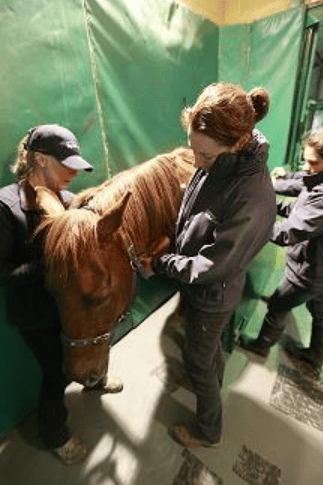 Prior to entering the padded drop-down stall, (also known as the induction or recovery box), the horse has its shoes removed. The mouth is rinsed out with water so that feed stuck behind the back teeth is not pushed down the trachea (windpipe) to the lungs with the endo-tracheal tube (ET tube), which provides oxygen and anaesthetic gases to the lungs during surgery. Additionally, the horse is given pre-medication sedation before surgery to ensure it is calm before the induction drugs, (the drugs which make it lie down), are given.
Prior to entering the padded drop-down stall, (also known as the induction or recovery box), the horse has its shoes removed. The mouth is rinsed out with water so that feed stuck behind the back teeth is not pushed down the trachea (windpipe) to the lungs with the endo-tracheal tube (ET tube), which provides oxygen and anaesthetic gases to the lungs during surgery. Additionally, the horse is given pre-medication sedation before surgery to ensure it is calm before the induction drugs, (the drugs which make it lie down), are given.
The horse is led into the induction box and is further sedated. Everyone remains quiet and the horse kept calm. It is squeezed between two padded walls to ensure it lies down safely as the induction drugs are given. We hold the head up high to encourage the horse to fall back onto its haunches and not forward onto its head or the handler.
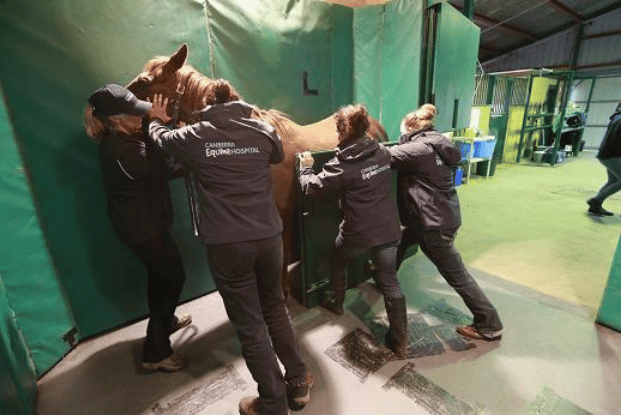
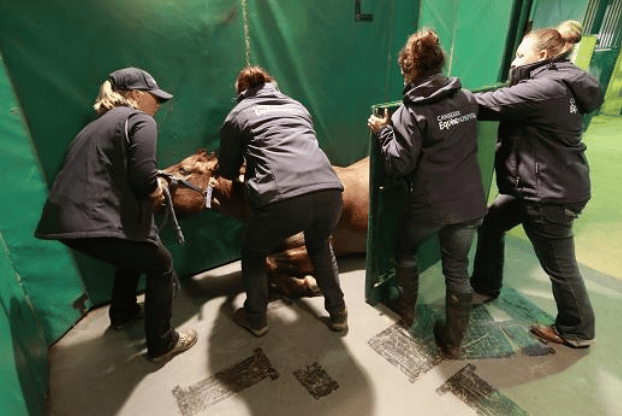
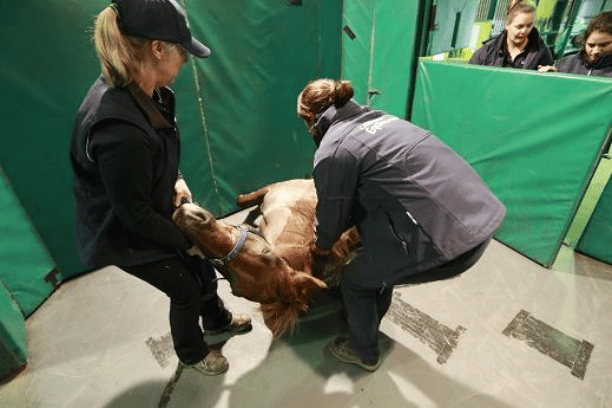
Once lying down, the ET tube is quickly placed to ensure the airway is accessed and so the anaesthetic machine can be connected. The supply of oxygen and anaesthetic gases via the ET tube is what keeps the horse anaesthetised during surgery. Quickly, attachments are placed around the pasterns and the horse hoisted onto the surgery table where it is appropriately positioned for the particular procedure. The area to be operated on is clipped and sterilely prepared with scrubbing and drapes.
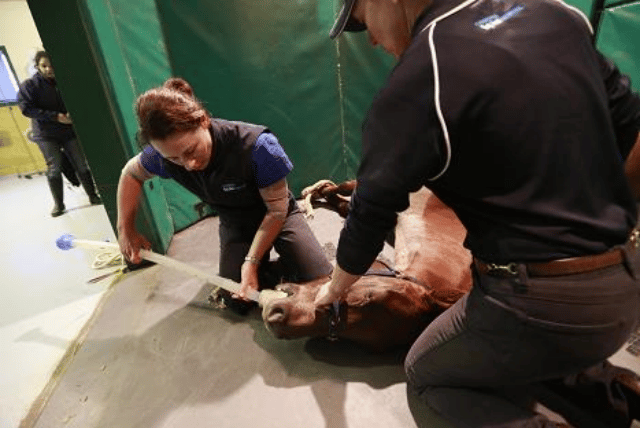
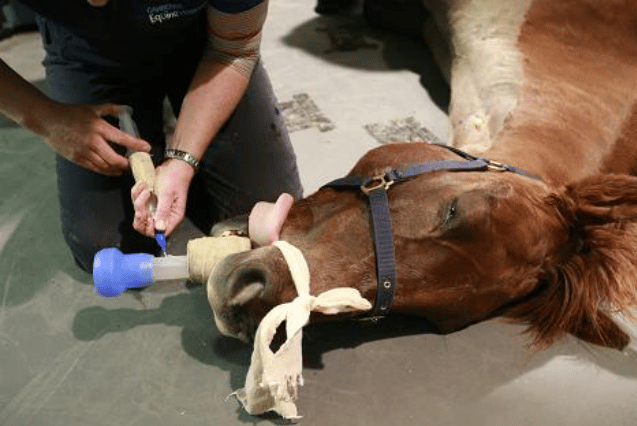
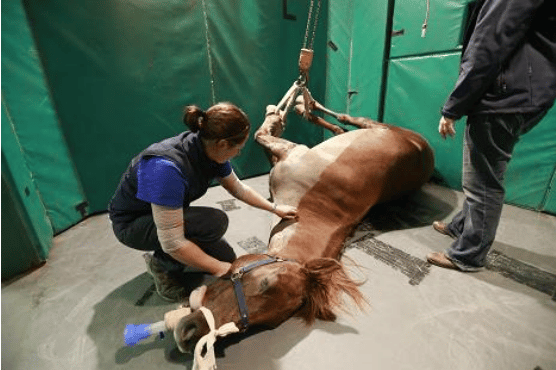
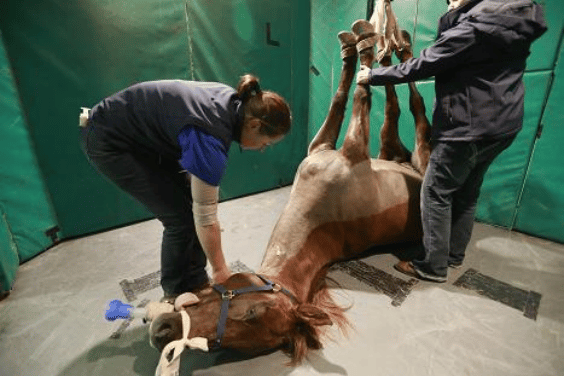
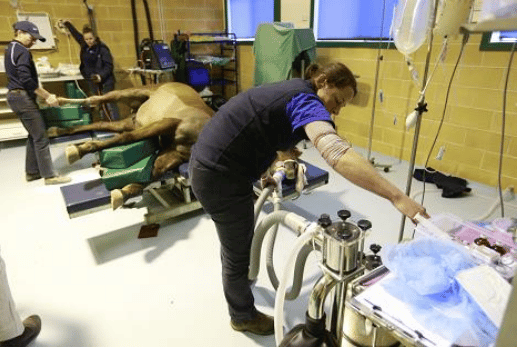
The anaesthetic monitoring equipment is connected and the horse’s closely monitored. This includes heart rate, respiratory rate, oxygenation, blood pressure and anaesthetic depth. Intravenous fluids are provided throughout surgery. At Canberra Equine Hospital, we always have an experienced veterinarian monitoring anaesthesia and communication between the surgeon and anaesthetist about the horse’s stability continues throughout the surgery.

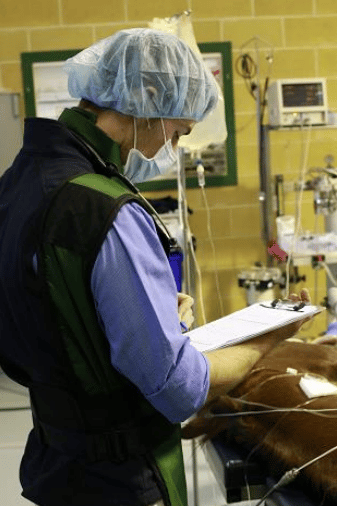
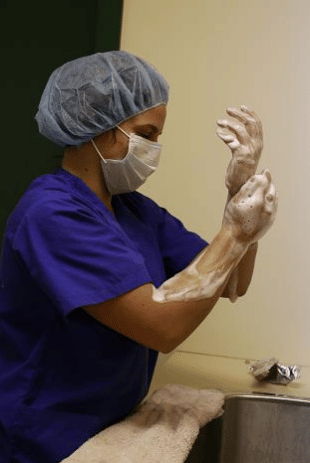

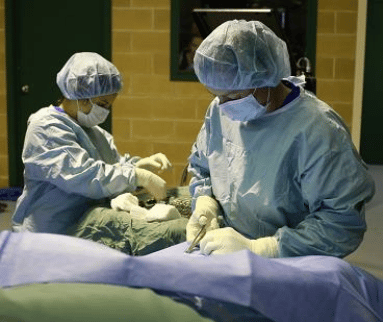

At the end of surgery, the machines are turned off and the horse moved back into the recovery box. Recovery can be a dangerous time because some horses become stressed and can injure themselves. Every precaution is taken to ensure a quiet and careful recovery with the horse encouraged to wake and stand slowly. Once the horse is stable on its feet, it is moved back to its stall and given food and water.
